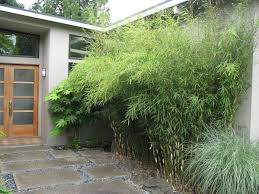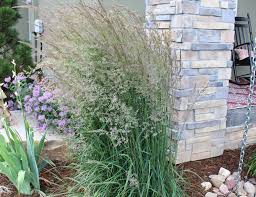Oriental Grass, also known as bamboo grass, is a type of plant that grows in many parts of Asia. It’s called “oriental” because it’s often found in countries like China, Japan, and Korea. This grass is quite special and has many interesting features.
One thing about Oriental Grass is that it can grow really tall. Some types of Oriental Grass can reach up to 30 meters in height! That’s as tall as a 10-story building! Because of its impressive height, this grass has been used for many things. People have used it to make houses, furniture, and even tools.
Another interesting thing is that Oriental Grass is very strong. It’s known for being flexible and durable. This makes it great for building things that need to last a long time. Some people even use it to make paper and cloth.
Oriental Grass also has a unique look. It has long, slender leaves that can sway gracefully in the wind. Some types of Oriental Grass have a bright green color, while others might be a bit more yellow or even black. Because of its beauty, many people like to plant Oriental Grass in gardens to add a touch of nature’s elegance.
Many animals find Oriental Grass useful too. Some animals eat its leaves, while others find shelter in the dense patches that the grass creates. This grass can help prevent soil erosion too, as its roots hold the soil together.
Taking care of Oriental Grass is not too hard. It usually needs a good amount of sunlight and water to grow well. It’s a good idea to plant it in well-draining soil and give it some space to spread out.
In many cultures, Oriental Grass holds special meanings. In some places, it’s a symbol of good luck and strength. People often use it in celebrations and ceremonies.
However, Oriental Grass is a remarkable plant with a rich history and many uses. Its tall stature, strength, and unique appearance make it a valuable part of many Asian cultures and ecosystems. Whether for building, decoration, or symbolism, Oriental Grass has found its place in the hearts of people across the world.
Read Also: Strawberry Petioles: Economic Importance, Uses and By-Products
How to Grow and Care for Oriental Grass

Growing and caring for Oriental Grass can be quite rewarding. Here are some simple steps to help you successfully grow and care for this unique plant:
1. Choose the Right Location: Oriental Grass generally prefers full sunlight, but it can tolerate partial shade as well. Select a location in your garden where the grass will receive at least 4-6 hours of sunlight each day.
2. Prepare the Soil: Oriental Grass prefers well-draining soil that is slightly acidic to neutral. You can improve the soil’s drainage by adding compost or organic matter to it. This will help the grass grow better.
3. Planting: Plant the Oriental Grass in the early spring or fall. Dig a hole that’s slightly larger than the plant’s root ball. Place the plant in the hole and backfill with soil, patting it down gently. Water the plant well after planting.
4. Watering: Keep the soil consistently moist but not waterlogged. Water the grass deeply whenever the top inch of soil feels dry. During hot and dry periods, you might need to water more frequently.
5. Mulching: Apply a layer of mulch around the base of the grass to help retain moisture and keep weeds at bay. Make sure the mulch doesn’t touch the plant’s stem directly.
6. Fertilizing: Oriental Grass doesn’t require excessive fertilizing. You can feed it with a balanced, slow-release fertilizer in the spring as new growth begins.
7. Pruning: As the grass grows, it might develop dead or damaged leaves. You can trim these away to maintain the plant’s appearance. In late winter or early spring, you can also cut the grass back to encourage new growth.
8. Division: Oriental Grass can become quite dense over time. To prevent overcrowding, you can divide the plant every 2-3 years. Dig up the plant, separate the clumps, and replant the divisions.
9. Protection: If you’re growing Oriental Grass in a colder climate, consider protecting it from harsh winter conditions. You can cover the base of the plant with a layer of mulch to insulate the roots.
10. Pest and Disease Management: Oriental Grass is generally resistant to pests and diseases. However, keeping an eye out for any signs of problems and addressing them promptly is always a good practice.
Remember, every garden is unique, and the needs of your Oriental Grass might vary based on your specific climate and soil conditions. Observing your plant’s growth and adjusting your care routine accordingly will help ensure its health and vitality.
Benefits of Oriental Grass

Oriental Grass, also known as bamboo grass, offers various benefits that make it a valuable addition to gardens and landscapes. Here are some of the benefits of growing Oriental Grass:
1. Erosion Control: The dense root system of Oriental Grass helps prevent soil erosion. Its strong roots bind the soil together, making it an effective choice for stabilizing slopes and preventing runoff.
2. Aesthetic Appeal: Oriental Grass adds visual interest to gardens and landscapes. Its tall, graceful stems and lush foliage create a sense of elegance and tranquility. It can serve as a focal point or backdrop for other plants.
3. Privacy and Screening: With its tall growth habit, Oriental Grass can be used to create natural privacy screens. Planted in rows, it can shield your outdoor space from unwanted views and provide a sense of seclusion.
4. Windbreaks: The tall and sturdy stems of Oriental Grass can act as windbreaks, helping to reduce the impact of strong winds on your property. This can be particularly useful in windy areas or to protect delicate plants.
5. Wildlife Habitat: The dense clumps of Oriental Grass provide shelter for various wildlife, including birds, insects, and small mammals. These creatures find refuge in the grass, contributing to the overall biodiversity of your garden.
6. Low Maintenance: Once established, Oriental Grass is relatively low-maintenance. It requires minimal pruning, and its growth habit means less need for frequent watering and fertilization.
7. Drought Tolerance: Many varieties of Oriental Grass are drought-tolerant once they are well-established. This makes them suitable for regions with limited water availability.
Air Quality Improvement: Like other plants, Oriental Grass contributes to air quality by absorbing carbon dioxide and releasing oxygen, helping to create a healthier environment.
8. Educational Value: Growing Oriental Grass can be a great way to teach children about plant growth, ecology, and the importance of caring for the environment.
Whether you’re looking to enhance the beauty of your garden, create functional elements like privacy screens, or contribute to the environment’s well-being, Oriental Grass offers a range of benefits that make it a versatile and attractive choice for landscaping.
Read Also: Strawberry Stems: Economic Importance, Uses and By-Products
Where to Find Oriental Grass near Me/You

You can find Oriental Grass, also known as bamboo grass, at various locations such as garden centers, nurseries, and online plant retailers. Here are some places where you can look to find or locate Oriental Grass:
1. Local Nurseries and Garden Centers: Visit local nurseries and garden centers in your area. They often carry a variety of plants, including Oriental Grass, especially if it’s suitable for your climate.
2. Home Improvement Stores: Some large home improvement stores also have gardening sections where you might find potted Oriental Grass plants.
3. Online Plant Retailers: Many online retailers specialize in selling plants. You can search for Oriental Grass or bamboo grass on these websites and have the plants shipped directly to your doorstep.
4. Botanical Gardens: Some botanical gardens have plant sales events where they offer a diverse range of plants, including Oriental Grass.
5. Plant Expos and Garden Shows: Attend local plant expos or garden shows. These events often feature a wide selection of plants for sale, and you might come across Oriental Grass there.
6. Local Plant Sales: Check if there are any local plant sales organized by gardening clubs, community groups, or educational institutions. These sales can be great places to find unique and locally-adapted plants.
7. Specialty Bamboo Nurseries: If you’re specifically interested in bamboo varieties, consider looking for specialty bamboo nurseries. They might have a wider selection of bamboo plants, including different types of Oriental Grass.
8. Online Marketplaces: Online marketplaces that connect buyers with local plant enthusiasts or sellers can be another option to find Oriental Grass.
9. Landscape Architects and Designers: If you’re working with a landscape professional, they might be able to source and recommend suitable Oriental Grass varieties for your project.
When looking for Oriental Grass, it’s a good idea to research the specific varieties that are suitable for your climate and growing conditions. Additionally, inquire about the care requirements and growth habits of the plants to ensure they will thrive in your garden.
